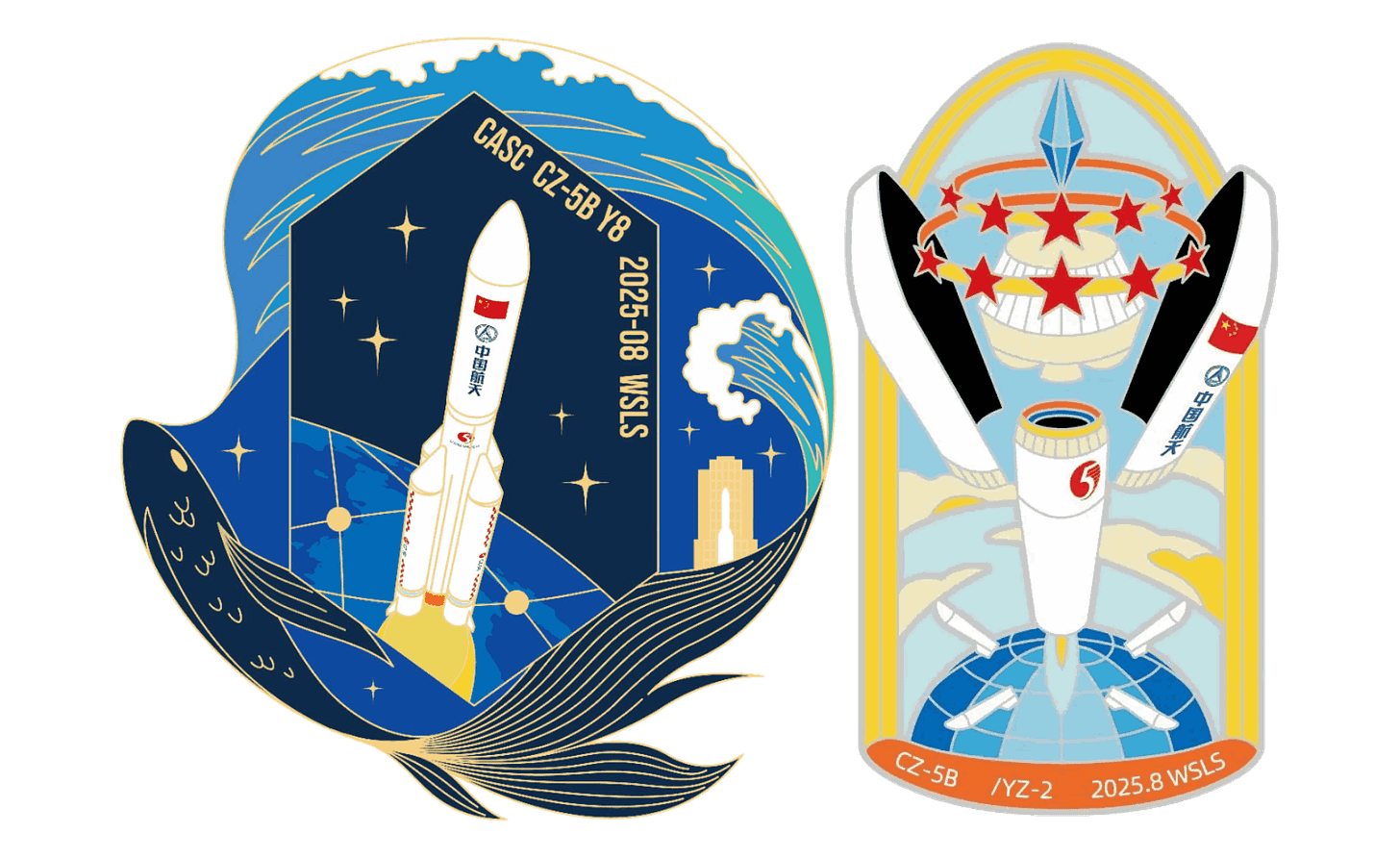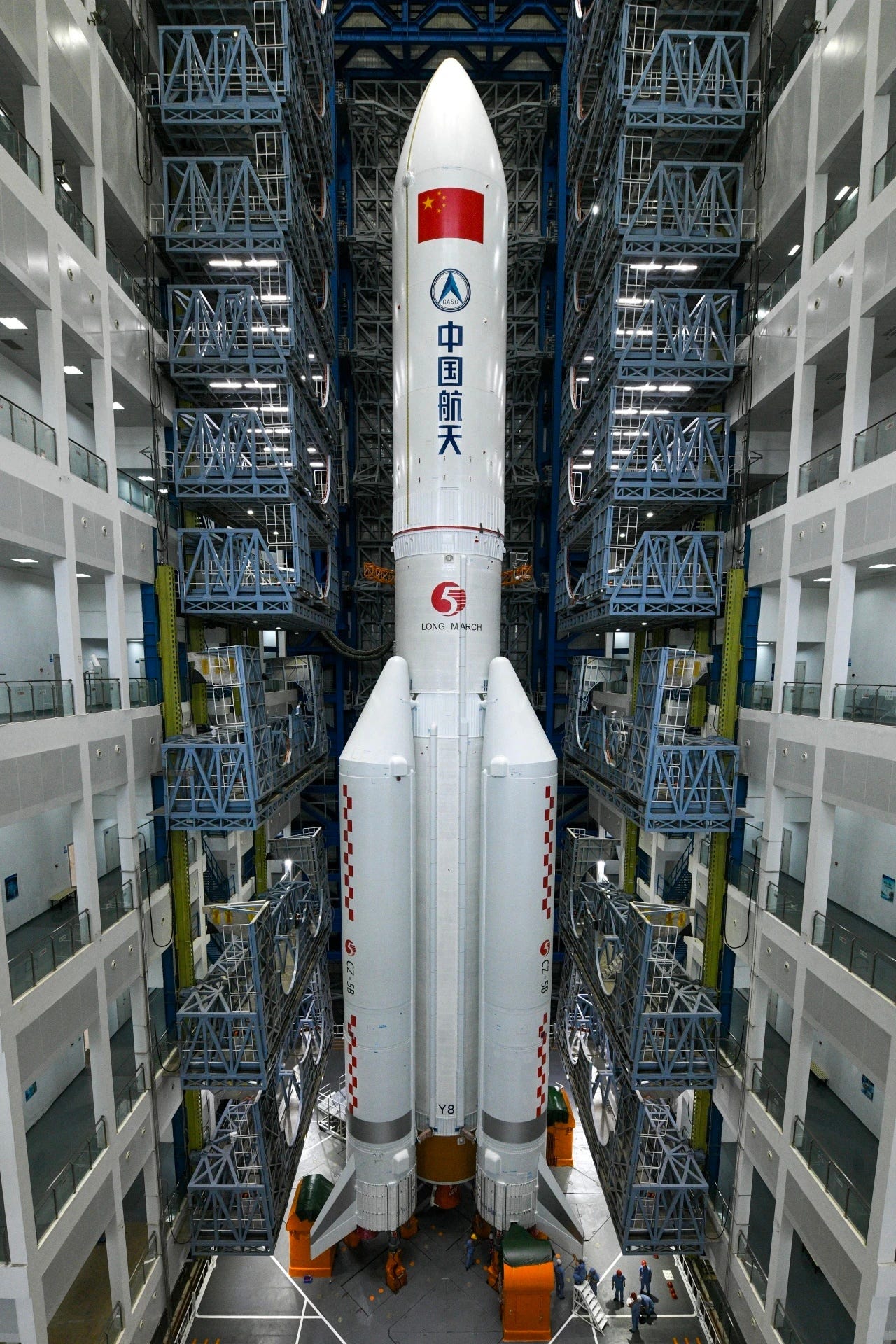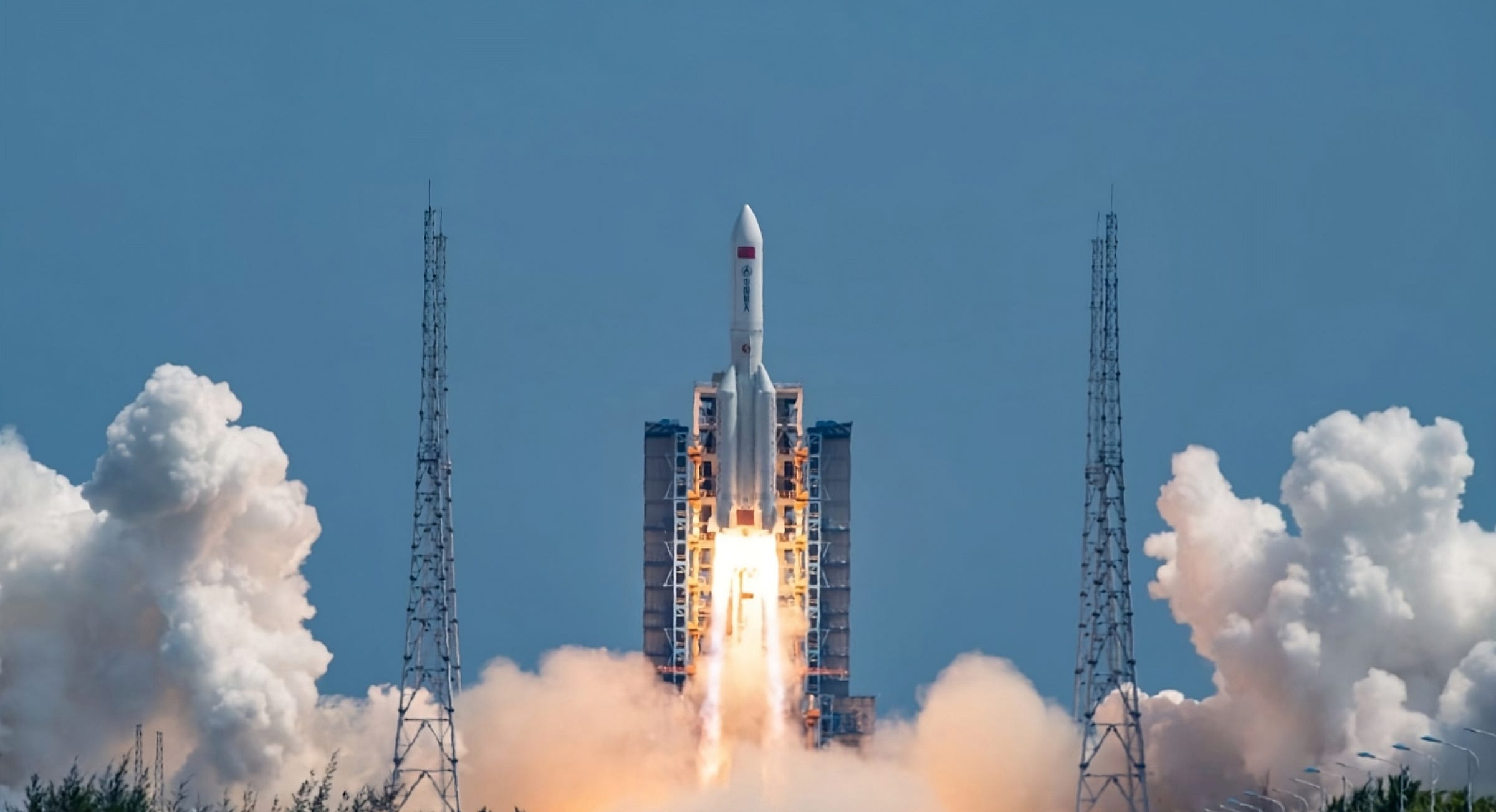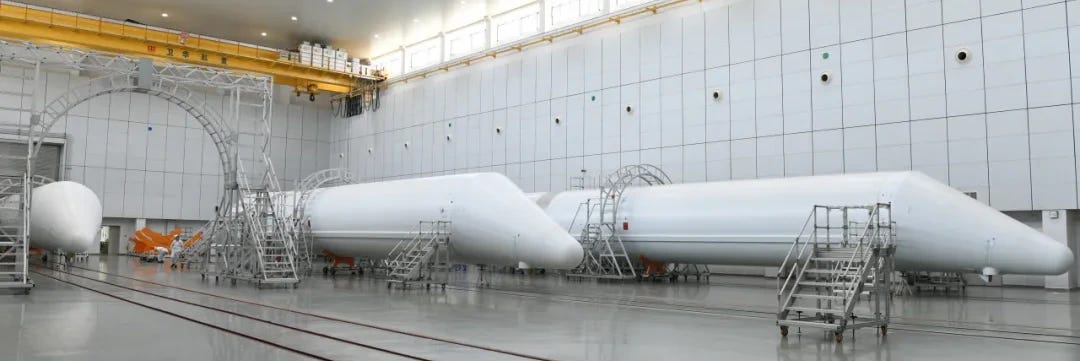Ten More GuoWang Satellites Enter Orbit [Long March 5B/YZ-2 Y8]
Another satellite batch grows the constellation.
The Long March 5B, China’s most capable launch vehicle, blasted off from Launch Complex 101 at the Wenchang Space Launch Site on August 13th at 14:43 pm China Standard Time (06:43 am Universal Coordinated Time), heading into polar orbit carrying another group of satellites.
Atop the Long March 5B today was the eighth batch of GuoWang (国网) mega-constellation satellites, with ten satellites attached to a Yuanzheng-2 upper-stage. This group of GuoWang satellites was contributed to by the China Academy of Space Technology.
GuoWang is still gradually catching up, now with 67 satellites in space, to the Qianfan (千帆) mega-constellation, also set to provide space-based internet services, with its 90 satellites in orbit. The catch-up is being enabled by the lack of deployment of Qianfan satellites, which is believed to be on hold to troubleshoot some satellite issues.
The GuoWang constellation is operated by China Satellite Network Group, a state-owned enterprise, and wholly backed by the Chinese government, who plan to have around 400 satellites deployed by 2027. By the 2030s, up to 13,000 satellites could be in orbit providing worldwide internet services, however China-focused services will be the immediate priority.
Two different satellite variants are believed to be in use for the constellation, a larger version used on vehicles like the Long March 5B, while smaller ones are used when launched atop rockets such as the Long March 8A, Long March 12, or Long March 6A. An electric propulsion system is likely in use due to a planned operational orbit above 1000 kilometers in altitude, as it would be the most efficient means of propulsion to deorbit each spacecraft once they reach the end of their operational lives after several years.

For the third GuoWang launch with the Long March 5B, the Shanghai Academy of Spaceflight Technology stated that they optimized the overall launch process, while reducing production costs, and working on several boosters for the vehicle in parallel. Those optimizations will eventually allow for ten launches of the rocket per year.
Today’s launch was the 7th mission for the Long March 5B, the 15th launch for the Long March 5 series, and the 588th launch of the Long March launch vehicle series. This was also the 45th launch from China in 2025.
Liftoff video via 航天面面观, SpaceLens云上天镜, and China航天 on Weibo, as well as Cosmic Penguin on Bluesky.
Livestream replay via ThatSpaceDogeGuy on YouTube.
Check out the previous Long March 5 launch
More GuoWang Satellites Reach Orbit [Long March 5B/YZ-2 Y7]
A Long March 5B, one of China’s largest rockets, lifted off from a very foggy Launch Complex 101 at the Wenchang Space Launch Site at 04:10 am China Standard time on April 29th (20:10 pm Universal Coordinated Time on April 28th) heading toward a polar orbit carrying a group of satellites.
What is the Long March 5B?
This section is for those less familiar with China's Long March series of launch vehicles.
The Long March 5B is China's most capable vehicle for sending payloads to low Earth orbit, and was developed by the China Academy of Launch Vehicle Technology and based on the Long March 5, removing the second-stage. The one-and-a-half-stage launch vehicle is fuelled with liquid hydrogen and liquid oxygen in its first-stage along with rocket-grade kerosene and liquid oxygen in four boosters.
The payload capacity of the launch vehicle is currently as follows:
25,000 kilograms to low Earth orbit

The Long March 5B's first-stage is powered by two YF-77 engines, which produce 143 tons of thrust using liquid hydrogen and liquid oxygen. To assist with liftoff, the rocket is equipped with four side boosters, each powered by two YF-100 engines that generate 245 tons of thrust using rocket-grade kerosene and liquid oxygen, providing a combined booster thrust of 979 tons. Together, the first stage and boosters deliver a total thrust of 1,122 tons.
On the launchpad, the Long March 5B stands at up to 53.66 meters tall and weighs up to 837,500 kilograms fully fuelled. The first-stage has a diameter of five meters, while the four boosters have a diameter of 3.35 meters, and the fairing has a diameter of 5.2 meters.
So far the Long March 5B has only flown from the Wenchang Space Launch Site, on the east coast of Hainan province.




![More GuoWang Satellites Reach Orbit [Long March 5B/YZ-2 Y7]](https://substackcdn.com/image/fetch/$s_!d5jG!,w_1300,h_650,c_fill,f_auto,q_auto:good,fl_progressive:steep,g_auto/https%3A%2F%2Fsubstack-post-media.s3.amazonaws.com%2Fpublic%2Fimages%2F0c9388bc-6d47-4e5c-8054-ad1242ebe9b4_1280x796.jpeg)

Any idea how many satellites were involved in this launch? There's plenty of room under that huge fairing!
Love that LM-5B, maybe next time China launches a module to the space station module the core stage should go along for the ride? Plenty of potential habitable space in that big hydrogen tank..